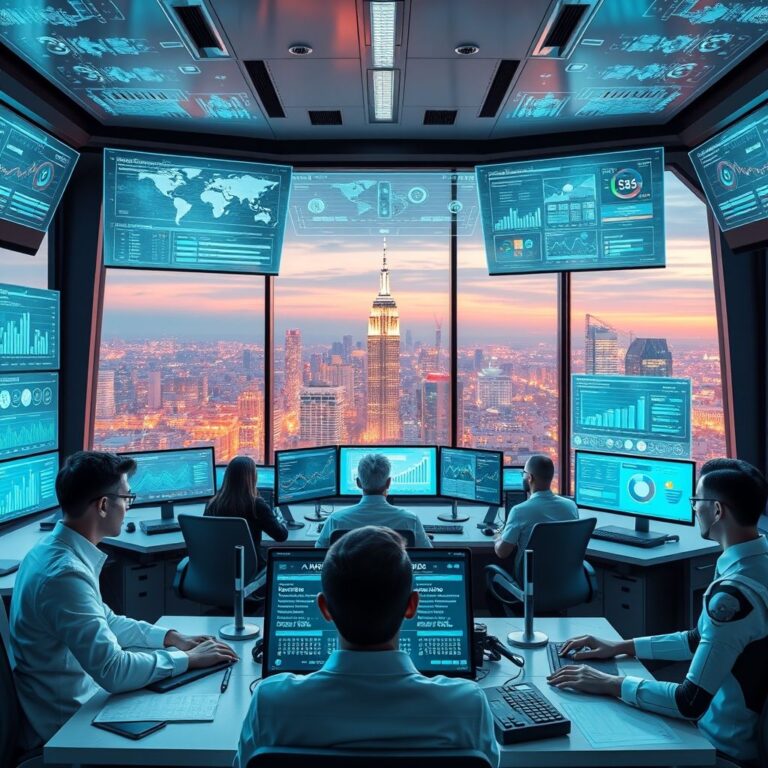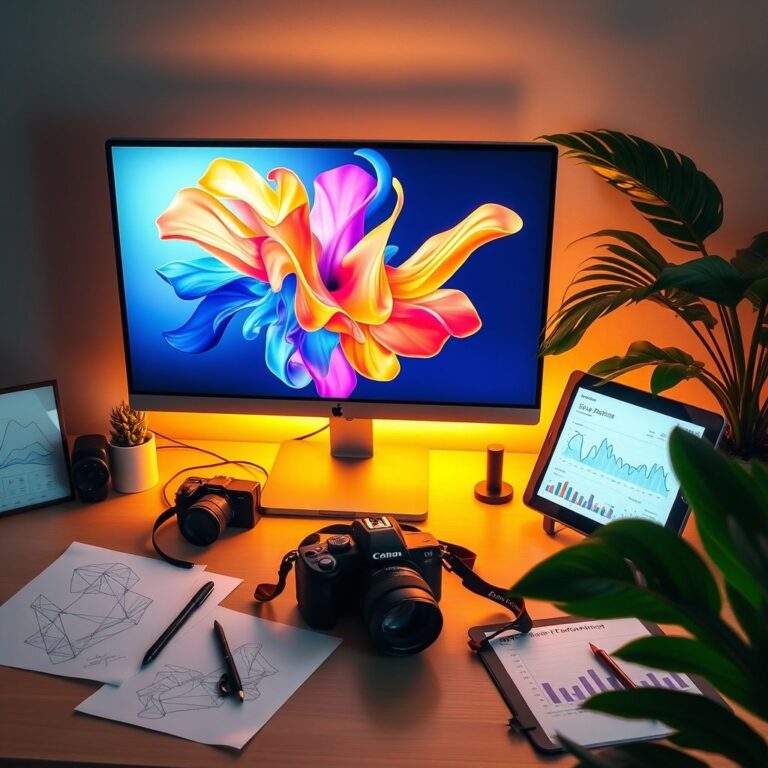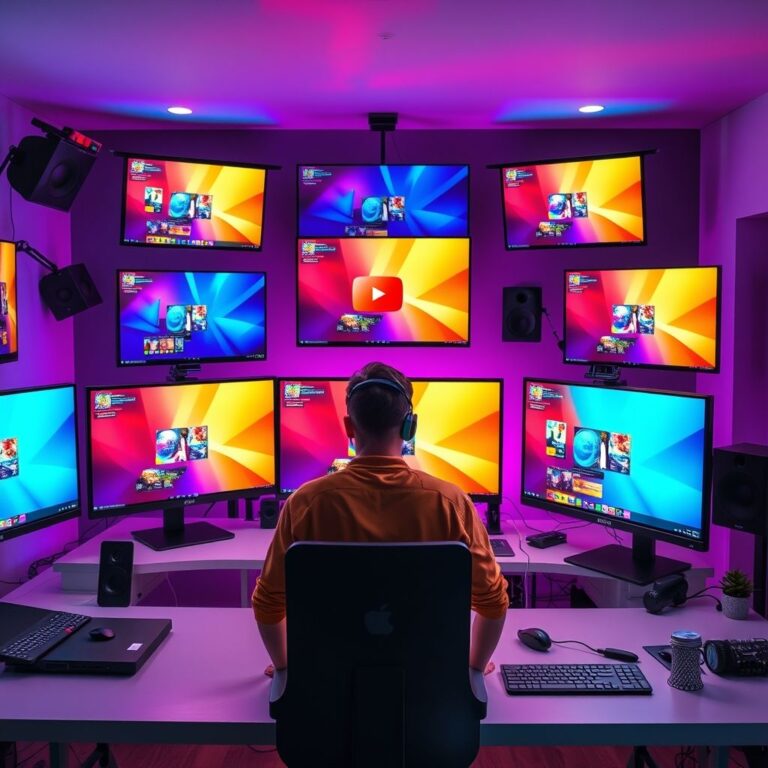How to Choose Between Midjourney and DALL·E 3 for Your Next Design Project
Graphic designers today face a new kind of challenge: with AI image generators exploding in popularity, which tool will actually bring your creative vision to life?
Both Midjourney and DALL·E 3 promise stunning visuals on demand, but diving into either without guidance can feel like navigating a creative maze blindfolded. Are you after hyper-realistic renders, or maybe quirky, abstract art? Knowing the strengths of each could save you hours — or even an entire project.
In this article, we cut through the noise to compare these two powerhouse tools head-to-head. If you’re a designer looking to harness AI for your next big project, you’ll get clear, actionable insights on their features, output quality, and usability. We’ll help you figure out not just which AI to choose, but why.
Ready to demystify the AI art scene and make your next design decision with confidence? Let’s jump in and see how Midjourney stacks up against DALL·E 3, so you can pick the perfect ally for your creative journey.
What the Research Reveals About Midjourney and DALL·E 3

In the evolving landscape of AI-driven design tools, Midjourney and DALL·E 3 stand out as powerful contenders for graphic designers seeking innovative solutions. A detailed examination of multiple analyses reveals distinct differences and strengths in their features, performance, and ideal use cases. Understanding these nuances can help designers match the right tool to their project needs, whether it’s creating high-quality artistic visuals, streamlining workflow, or leveraging industry-specific applications.
This section explores key aspects including artistic style, user interface, generation speed, editing options, industry relevance, pricing structures, and API capabilities to provide a balanced overview of both platforms.
Artistic Style and Image Quality Differences
Midjourney is often praised for its highly stylized, creative outputs that appeal to designers seeking unique, almost painterly aesthetics. It excels at producing rich textures and imaginative scenes, making it popular among those who prioritize artistic expression. In contrast, DALL·E 3 focuses on photorealism and detailed image accuracy, which benefits projects requiring lifelike visuals or precise object representation. Research indicates that while both generate impressively high-resolution images, Midjourney tends to produce more abstract and experimental art, whereas DALL·E 3’s outputs align closely with reality and commercial use.
User Interface and Workflow: Discord vs. ChatGPT Integration
Midjourney operates primarily through Discord, which can be both an advantage and a barrier. Its integration allows for collaborative community engagement and instant sharing but requires familiarity with Discord’s platform. This setup suits designers comfortable with chat-based commands and social interaction. On the other hand, DALL·E 3 integrates seamlessly within the ChatGPT environment, streamlining workflow for users already utilizing OpenAI’s conversational AI. This integration simplifies prompt creation and iterative edits in a conversational format, making it highly accessible to a wider audience.
Speed of Generation and Editing Capabilities
When it comes to speed, DALL·E 3 generally produces images faster, supporting quicker project turnarounds. Its editing features, including inpainting and variations, are accessible within the ChatGPT experience, allowing designers to refine outputs without leaving the interface. Midjourney’s generation speed is slightly slower, partly due to its emphasis on complex rendering, but it offers strong upscaling options and iterative prompt tweaking within Discord channels. Both platforms support iterative development, but DALL·E 3 holds a slight edge for rapid prototyping.
Industry Applications like Marketing and Healthcare
Both AI image generators have found niches across industries. Midjourney’s artistic prowess is leveraged heavily in marketing, entertainment, and creative agencies for concept art and visually compelling content. Its unique style supports brand differentiation and storytelling. Conversely, DALL·E 3’s precision and realism make it suitable for healthcare, e-commerce, and product visualization, where accurate depictions and clarity are critical. Case studies show successful deployments of DALL·E 3 in medical imaging illustrations and retail catalog creation, highlighting its versatility.
Pricing Models Overview
Midjourney offers tiered subscription plans based on usage, with options for casual users up to enterprise-level needs. Pricing typically includes limits on image generations and priority access, making it cost-effective for heavy users focused on creative exploration. DALL·E 3 utilizes a pay-per-use or subscription-based model through OpenAI, with charges reflecting the number and complexity of images generated. This can benefit occasional users or teams scaling around specific project phases. Transparent pricing details on both platforms allow designers to estimate costs aligned with their production volume.
API Availability and Extensibility
OpenAI provides a well-documented API for DALL·E 3, facilitating integration into custom workflows, apps, and enterprise systems. This extensibility makes it attractive for developers and businesses looking to embed AI-generated visuals at scale. Midjourney, while popular in creative circles, currently lacks a public API, limiting its use to the Discord environment and restricting automated or large-scale commercial integration. For projects emphasizing flexibility and automation, DALL·E 3’s API support offers a significant advantage.
Understanding User Experience: What the Data Didn’t Tell Us
While feature lists and output samples are essential in comparing Midjourney and DALL·E 3, the real test comes down to how these tools fit into a designer’s daily routine. Beyond raw capabilities, user experience hinges on factors like how easy each AI is to learn, the support ecosystem around it, and the friction or flow created when integrating with existing workflows. These subtle yet critical nuances often elude technical reviews but strongly influence which tool feels right for a project.
In this section, we dive into insights gathered from real-world users—graphic designers who have navigated these platforms beyond the initial hype. Their experiences reveal surprising differences in learning curves, community engagement, and the impact these AIs have on creative momentum, helping you envision which might best complement your design process.
Real-World Usability and Learning Curve
Midjourney tends to attract designers eager to experiment with minimal setup, thanks to its intuitive prompt-based system and direct Discord integration. This makes it approachable even for those new to AI tools. Many users mention a quick ramp-up period, with immediate visual feedback encouraging rapid iteration. However, mastering nuanced prompts to shape complex images takes time, which can introduce a subtle learning curve as projects grow more ambitious.
Conversely, DALL·E 3 offers a more guided experience through familiar web interfaces, including seamless access via platforms like ChatGPT. This lowers the entry barrier for users less comfortable with command-line style prompts but can feel restrictive for quick batch generation. Designers note a generally flatter learning curve for basic use but some frustration when seeking advanced customization or integration options.
Community and Developer Ecosystem Strength
Midjourney benefits from an active, vibrant Discord community where users share tips, prompt recipes, and troubleshoot collaboratively in real time. This peer support creates a sense of belonging and continuous learning, a valuable resource for designers balancing creative exploration with deadlines. Regular updates and experimental features directly from the developers also keep the ecosystem fresh and engaging.
DALL·E 3, backed by OpenAI’s widespread developer network, offers extensive official documentation and integration plugins for popular design software. While its user communities are growing, they remain somewhat segmented across different platforms, resulting in less immediate peer-to-peer dialogue. Nevertheless, the structured ecosystem appeals to designers who prioritize formal support and stable API connections for automation.
Integration Challenges with Existing Design Tools
Workflow integration is a decisive factor for many designers. Midjourney, primarily Discord-based, requires exporting images for import into standard graphic design software, which some find interrupts their creative flow. However, its compatibility with third-party automation tools allows skilled users to streamline parts of this process.
DALL·E 3 excels here by embedding directly into creative suites and web-based design platforms via API, enabling smoother transitions from AI generation to image editing. This integration reduces friction and supports more iterative workflows, especially for teams collaborating across tools. Yet, these benefits sometimes come at the cost of less spontaneous visual experimentation.
Support and Documentation Quality
Users report that Midjourney’s community-driven support, while informal, is remarkably responsive and rich with creative insights. However, official documentation can be sparse or overly technical, posing challenges for novices.
DALL·E 3 provides comprehensive, user-friendly documentation and structured tutorials that help bridge the gap for users of varying skill levels. Official channels offer timely updates and technical assistance, though some find the overall tone more corporate and less community-focused.
Ultimately, the choice between Midjourney and DALL·E 3 extends beyond their raw image-generating capabilities; it’s about which tool’s ecosystem and learning environment align best with your workflow preferences and creative rhythms.
Breaking Down Cost-Effectiveness Beyond Sticker Price
When choosing between Midjourney and DALL·E 3, understanding pricing goes well beyond the upfront sticker price. For freelancers and businesses alike, cost-effectiveness hinges on value delivery, scalability, and the hidden expenses tied to each platform’s pricing model. By dissecting subscription versus pay-per-use frameworks, evaluating output relative to budget, and factoring in workflow efficiencies, graphic designers can make financially savvy decisions aligned with their specific project demands.
Moreover, long-term considerations such as API access and the potential for faster editing cycles directly affect the return on investment (ROI). This section breaks down these critical factors to guide thoughtful investment in AI image generation tools that truly maximize creative and financial outcomes.
Subscription vs. Pay-Per-Use Pricing Models
Midjourney primarily offers subscription plans, which provide a set number of image generations per month at a fixed rate. This model suits users with consistent, high-volume output needs by offering predictable monthly expenses and often unlimited or high-capacity usage tiers. In contrast, DALL·E 3 operates mostly on a pay-per-use basis, charging credits for each image generated. This can be advantageous for intermittent or low-volume users who want to avoid recurring fees.
However, pay-per-use costs can accumulate rapidly for heavy users, potentially surpassing subscription fees over time. Freelancers may prefer Midjourney’s subscription for budgeting stability, while businesses may find DALL·E 3’s flexibility useful during project peaks or variable workloads.
Cost Relative to Output Volume and Quality
Both platforms deliver high-quality results, but output volume and detail refinement impact cost-effectiveness. Midjourney’s subscription approach smooths out costs across larger image runs, often lowering the unit cost per creation. DALL·E 3’s pay-per-use pricing means frequent edits or retries can drive up expenses quickly, especially for projects demanding multiple iterations.
For example, a freelance designer generating dozens of concept images monthly might find Midjourney’s flat rate more economical, whereas occasional commissioned work with fewer outputs could fit DALL·E 3’s model better.
Potential Savings from Faster Editing Cycles
Time is money in design workflows, and both tools offer advantages that can reduce editing durations. Midjourney’s subscription plans often allow unlimited or rapid retry options within the monthly allowance, enabling efficient experimentation without incremental charges. DALL·E 3 credits are typically deducted per generation, including edits, so faster refinement cycles may inflate costs.
Designers who prioritize rapid iteration and experimentation may find that Midjourney delivers savings through flexible usage, translating to quicker project turnarounds and lower overall costs despite the higher upfront spend.
ROI Considerations for Different Industries and API Access Impact
Return on investment varies by sector. Marketing agencies and product designers handling large-scale visual campaigns benefit from Midjourney’s subscription scalability and API integration, enabling bulk image generation automated within existing pipelines. This reduces manual overhead and drives down per-image costs significantly over time.
Conversely, smaller studios or educators may prefer DALL·E 3’s pay-as-you-go setup to control expenses tightly without committing to monthly fees. However, lack of API access or limited integration options could lead to inefficiencies as usage scales.
In sum, API availability enhances long-term cost predictability and workflow automation, tipping ROI favorably for enterprises that plan extensive use. Freelancers and occasional users might prioritize low entry costs and flexibility offered by pay-per-use pricing despite higher marginal expenses.
Ethical Considerations When Using AI-Generated Images
As AI image generators like Midjourney and DALL·E 3 become integral tools for graphic designers, it is imperative to consider the ethical dimensions that accompany their use. Harnessing these technologies involves more than just creative experimentation—it demands awareness of complex challenges around ownership, representation, honesty, and sustainability.
These considerations not only shape how designers approach projects but also influence their relationships with clients and audiences. Adopting responsible practices ensures that AI-generated creativity enriches the field without compromising ethical standards.
Intellectual Property and Copyright Concerns
One of the most pressing ethical questions centers on intellectual property. AI models often train on vast datasets containing copyrighted material, raising difficult issues about the originality of generated images. Designers must be vigilant in understanding the copyright policies of platforms like Midjourney and DALL·E 3, especially when images resemble or incorporate elements from existing works.
Clear contract terms and attribution protocols with clients can help navigate potential disputes. Additionally, avoiding the direct replication of copyrighted styles or content fosters respect for original creators and reduces legal risks.
Bias and Representation in AI Outputs
AI image generators can inadvertently reproduce or amplify societal biases embedded in their training data. This may manifest in stereotypical portrayals or limited diversity in depicted subjects, which risks reinforcing harmful narratives.
Designers should critically evaluate outputs, actively seeking to counteract biases by refining prompts or combining AI results with their informed perspectives. Maintaining cultural sensitivity and inclusivity is crucial, as is staying informed about the evolving limitations and improvements in these technologies.
Transparency With Clients and Audiences
Honest communication about the role of AI in the design process helps build trust. Clients and end-users benefit from understanding when and how AI tools contribute to creative outcomes, which can set realistic expectations and honor originality.
Being transparent also involves disclosing any affiliations or licensing restrictions tied to AI-generated visuals, ensuring ethical use aligns with professional standards and the client’s values.
Environmental Impact of AI Processing
The computational power behind AI image generation consumes significant energy, raising concerns about environmental sustainability. Designers can mitigate this impact by using AI thoughtfully—running only necessary iterations and choosing providers who prioritize green data centers.
Balancing innovation with environmental responsibility speaks to a broader ethical stewardship within the design community and encourages mindful use of powerful technologies.
Guidelines for Responsible AI Creativity
To foster responsible AI adoption, designers can follow several practical guidelines:
- Review and respect the terms of use and copyright policies of AI platforms.
- Critically assess AI outputs for bias and accuracy, supplementing with human insight.
- Communicate openly about AI’s role with clients and audiences.
- Minimize environmental impact through efficient use and provider selection.
- Continue educating themselves on evolving ethical challenges and best practices.
By embedding these principles into their workflow, designers can harness AI’s creative potential responsibly, enhancing their craft while upholding ethical integrity.
Sample Outputs and Case Use Scenarios: Seeing the Tools in Action

Choosing the right AI image generator for your design project goes beyond specs—it’s about how each tool performs with real-world applications. By examining sample outputs and hypothetical scenarios, graphic designers can better visualize the nuances between Midjourney and DALL·E 3. This section dives into concrete examples and use cases that highlight differences in style, detail, and workflow integration, helping you decide which tool aligns best with your creative needs.
From vivid marketing visuals to informative healthcare graphics, and the fluidity of rapid client iterations to integrating AI-assisted feedback, these examples showcase how each platform responds to the demands of various design contexts.
Marketing Campaign Artwork: Style and Detail Comparison
In marketing, image impact needs to be instantaneous, with vibrant colors and memorable compositions. Midjourney often shines here with its painterly, sometimes surreal aesthetics, producing richly textured outputs that appeal to campaigns aiming for bold, artistic statements. For instance, a promotional poster for an eco-friendly product created by Midjourney might feature lush, hyper-realistic foliage blending seamlessly into an abstract background, igniting curiosity and brand affinity.
Conversely, DALL·E 3 excels in precise detail and versatility across styles. It can generate crisp, clean graphics with photographic realism or playful cartoon-like simplicity, ideal for brands needing clear, straightforward imagery. A DALL·E 3-crafted ad for a tech gadget could highlight sleek product shots with exacting clarity, making every feature stand out for discerning consumers.
Healthcare Educational Materials: Clarity and Accessibility
Healthcare design demands clarity and empathy. DALL·E 3’s strength lies in producing medically accurate, approachable visuals, from detailed anatomical illustrations to friendly character guides for patient education. Its ability to interpret detailed prompts ensures educational materials are accessible and easy to understand.
Midjourney can add an emotional layer, crafting visuals that evoke care and warmth through soft lighting and artistic stylization, perfect for campaign posters or wellness brochures aimed at patient comfort. However, its less clinical feel may not suit materials requiring strict accuracy.
Rapid Iteration in Client Projects
Speed and flexibility often govern client-driven workflows. Midjourney’s outputs can offer unexpected, creative variations quickly thanks to its interpretative style, which can inspire fresh directions spontaneously. For example, a branding project can benefit from the unexpected textures and moods Midjourney generates in early drafts.
DALL·E 3, with its prompt refinement and consistency, supports iterative projects by allowing designers to make precise changes and generate tightly focused results. This reduces time spent on edits and provides clients with predictable outcomes.
Integrating Feedback with ChatGPT Edits
Both tools pair well with ChatGPT for refining image prompts based on client feedback. After receiving input, ChatGPT can rewrite prompts to tune details or adjust style cues. Midjourney users might emphasize creative adjectives and mood descriptors, while DALL·E 3 users can specify exact elements like lighting, perspective, or object arrangements.
This synergy enhances workflow efficiency, making iterations smoother and more aligned with client expectations by blending verbal feedback with visual generation effectively.
—
Elevate your Midjourney and DALL·E 3 designs instantly with [Let’s Enhance AI](https://pollinations.ai/redirect/letsenhance) for sharper, vivid results.
Conclusion

Choosing between Midjourney and DALL·E 3 ultimately comes down to the unique demands of your design projects and personal workflow preferences. Both platforms offer remarkable capabilities—from Midjourney’s creative flair to DALL·E 3’s intuitive precision—but the best fit hinges on factors like style flexibility, ease of use, and output quality.
Here are a few key takeaways to keep in mind:
- Midjourney excels in artistic and abstract imagery, ideal for designers seeking bold, imaginative visuals.
- DALL·E 3 shines with detailed, realistic renderings and straightforward prompt handling.
- Your project’s context—whether conceptual or commercial—will influence the tool that best supports your creative goals.
The nuance in these choices means there’s no one-size-fits-all answer, but exploring both can empower your design arsenal.
Take the next step by testing both Midjourney and DALL·E 3 through their free trials or demos. See firsthand which aligns with your style and workflow. Don’t forget to share your experiences with the design community—your insights could guide fellow creatives navigating this evolving landscape.
Experiment boldly, share generously, and watch your projects come alive in exciting new ways.






